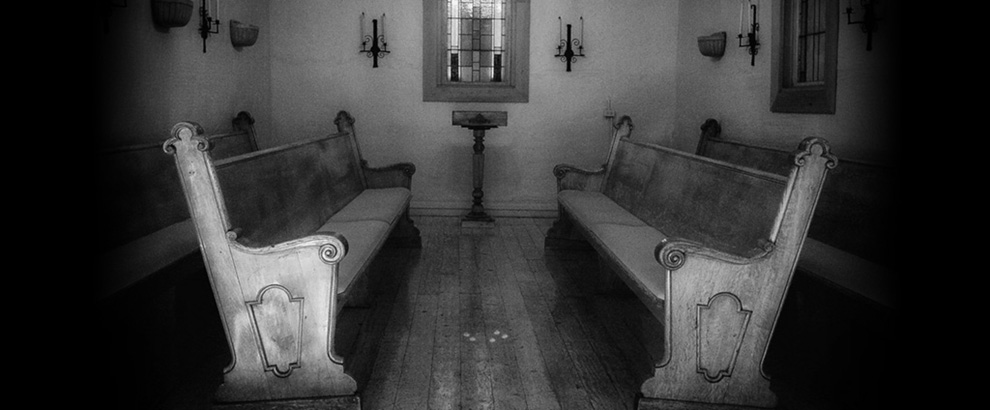
British writer Robert Graves came terribly close to joining the 9.7 million other soldiers who died in World War I when his body was tossed among mounds of corpses after it was evacuated from the battlefield and he was listed as officially dead, with notices sent to British newspapers and his family. A shell fragment had shot through his lungs at the Battle of the Somme in France. It was 1916, and he was 21 years old.
Graves went on to live another 69 years after almost literally coming back from the dead, and along the way he established himself as one of the leading figures in 20th century literature, with a prodigious output spanning the worlds of poetry, fiction, short stories and memoir.
He quit writing in his final dozen years only because Alzheimer’s disease descended upon him, robbing him, finally, of all memory.
He had been a deeply learned man, steeped in mythology, father of eight children from two wives, lover to many (and author of ardent love poetry), prone to obsessions and depression. Much of the latter was due to PTSD, known in his time as “neurasthenia” or “shell-shock,” a well-documented feature of his personal history.
This is Graves telling us, wrapped (rapt?) within a mythic poem, that he is scared half to death and desperate to return to life. But the pull of death in a failing body exerts a powerful force of its own…
His 1929 memoir, “Good-bye to All That,” a searing account of his time in the crazy-making trenches of the war, vaulted him to literary stardom. In its refusal to embrace the usual bromides of nobly serving God and country, it also earned him enough money to finance a continuing devotion to poetry—about which he memorably said, “There is no money in poetry, but then there is no poetry in money, either.”
His memoir also begat the ire of friends and even his father, a Gaelic scholar and folklorist who took umbrage at his son’s irreverence and wrote a heated rejoinder the following year entitled: “To Return to All That.”
Yet for all the anguish around his war experience and its lifelong aftermath, his poem, “Escape,” of somehow slipping out from eternal darkness, ends with the lines, “O Life! O Sun!”
Let’s read it now before returning to contextualize its multiple mythological references and notes of a slightly macabre humor that likely buoyed Graves through his rehabilitation and beyond.
***

***
ESCAPE
(August 6, 1916.-Officer previously reported died of wounds,
now reported wounded: Graves, Captain R., Royal Welch Fusiliers.)
… But I was dead, an hour or more.
I woke when I’d already passed the door
That Cerberus guards, and half-way down the road
To Lethe, as an old Greek signpost showed.
Above me, on my stretcher swinging by,
I saw new stars in the subterrene sky:
A Cross, a Rose in bloom, a Cage with bars,
And a barbed Arrow feathered in fine stars.
I felt the vapours of forgetfulness
Float in my nostrils. Oh, may Heaven bless
Dear Lady Proserpine, who saw me wake,
And, stooping over me, for Henna’s sake
Cleared my poor buzzing head and sent me back
Breathless, with leaping heart along the track.
After me roared and clattered angry hosts
Of demons, heroes, and policeman-ghosts.
“Life! life! I can’t be dead! I won’t be dead!
Damned if I’ll die for any one!” I said….
Cerberus stands and grins above me now,
Wearing three heads—lion, and lynx, and sow.
“Quick, a revolver! But my Webley’s gone,
Stolen!…No bombs…no knife…
The crowd swarms on,
Bellows, hurls stones…Not even a honeyed sop…
Nothing…Good Cerberus!…Good dog!…but stop!
Stay!…A great luminous thought…I do believe
There’s still some morphia that I bought on leave.”
Then swiftly Cerberus’ wide mouths I cram
With army biscuit smeared with ration jam;
And sleep lurks in the luscious plum and apple.
He crunches, swallows, stiffens, seems to grapple
With the all-powerful poppy…then a snore,
A crash; the beast blocks up the corridor
With monstrous hairy carcase, red and dun—
Too late! for I’ve sped through.
O Life! O Sun!
***
In 1975, psychiatrist James Moody released “Life After Life,” his best-selling account of 150 interviews with people who claimed to have had near-death experiences (NDEs). Though the stories varied in detail, they reflected a strikingly common core of experiencing beams of golden light, a welcoming, benevolent presence, feelings of profound peace, floating outside of one’s body, and so on.
Graves’s NDE occurred some half-century earlier, and it is open to debate how closely his poem about it hewed to his actual memory, or whether he instead took full advantage of the poetic license that was his.

But what we do readily discern is how little (none, actually) there is of golden light or inner peace in the poet’s account. Instead, he confronts Cerberus, a mythological three-headed dog stationed at the gates of the underworld to prevent anyone’s exit.
Graves has been dead an hour or more, he reports, already inside Cerberus’s domain and half-way to Lethe, the river that flows through Hades and provides the water that dead souls drink to forget their earthly lives.
This is Graves telling us, wrapped (rapt?) within a mythic poem, that he is scared half to death and desperate to return to life. But the pull of death in a failing body exerts a powerful force of its own, “vapors of forgetfulness floating” in his nostrils, pursued by “angry hosts/Of demons, heroes, and policeman-ghosts.”
***
Then “Lady Prosperine” appears, Prosperina being the Greek goddess of fertility and agriculture, standard-bearer of the feminine principle from which Graves drew creative inspiration all his days. She clears his “buzzing head” and inspires his bellow: “Life! life! I can’t be dead! I won’t be dead!
As he assesses his situation, he falls back on the imagery all too familiar to his soldier’s ways: “Quick, a revolver! But my Webley’s gone,/Stolen!…No bombs…no knife…”
Webley was the standard-issue revolver British soldiers took with them to war, but neither it nor any bombs or knives survived his trip to the underworld. Can he outrun his pursuers and then somehow get past the all-powerful Cerberus, back to the life he now cherishes as never before?

The poem and his return to the dayworld concludes as he uses his earthly wiles to outfox the canine. His gun may be gone, and the “Good dog!…Stay!”…commands apparently sound none too convincing to a snarling, three-headed dog. But wait!
Some morphine, “the all-powerful poppy” that he took to the battlefield to cope with pain, might be just the weapon he needs to complete the dash back to his earthly domain.
And so it is, Graves heightening the irony by concealing the morphine in a spare army biscuit “smeared with ration jam” and stuffing it down the gullet of the ravenous Cerberus, who promptly crashes to sleep.
It’s a delicious dollop of dark humor, the author bolting from the death that war had briefly visited upon him by using the ghastly, universally reviled rations of war to make his escape.
If he indeed meant it as such, it stands as a bow to the more ordinary drudgeries of war, when a certain kinship of everyday misery may develop among soldiers who escape the jaws of death and are only too happy to survive for another day that may yet promise life and sun.
A day in which a “biscuit smeared with ration jam” will, upon consideration, taste like the most marvelous dish in the world.
***
This fascinating half-hour documentary reveals a life few novelists would dare tackle as fiction, larger than life as its subject seems to be. And no, I can discern zero hint of why it was included as a “Young Indiana Jones Historical Documentary…”
***
Check out this blog’s public page on Facebook for 1-minute snippets of poetry, wisdom and other musings from the world’s great thinkers and artists, accompanied by lovely photography.
http://www.facebook.com/andrew.hidas
Deep appreciation to the photographers! Unless otherwise stated, some rights reserved under Creative Commons licensing.
Elizabeth Haslam, whose photos (except for the books) grace the rotating banner at top of page.
https://www.flickr.com/photos/lizhaslam/
Library books photo by Larry Rose, all rights reserved, contact: larry@rosefoto.com
Graves headshots young and old and Cerberus illustration from the public domain.















Whoa!, Another fine post Andrew – I knew the name Robert Graves and knew he was a writer/poet but that’s about it! Powerful stuff, excellent 30 min documentary too – I’ve never completely bought into the madness/creativity-artistic genius theory but this documentary made me wonder again (still not fully subscribed). Now I want to know more about Robert Graves, have you read either of the biographies mentioned? Escape is a powerful poem, I had to look up 4 words while reading (all of which you defined of course in your succinct analysis) but it didn’t slow me down. Thanks for the journey my friend!
Almost clicked the “Buy” button on the Graves bio the other night, Kevin, but wisely (I think!), refrained, given the piles on my tables & shelves currently staring at me for which I was similarly motivated on previous immersions in someone’s work and life. His, however, seems even more interesting than so many others whose names also call to me. So please do pass along whatever strikes you if you do take the plunge, and meanwhile, I will indeed revisit this genius-madness question, about which I have traversed a similar path, at first romanticizing it, then thinking it perhaps too limiting, but more recently thinking again it may indeed carry a good deal of weight. And thanks for thinking along with these meanderings here—always a pleasure.